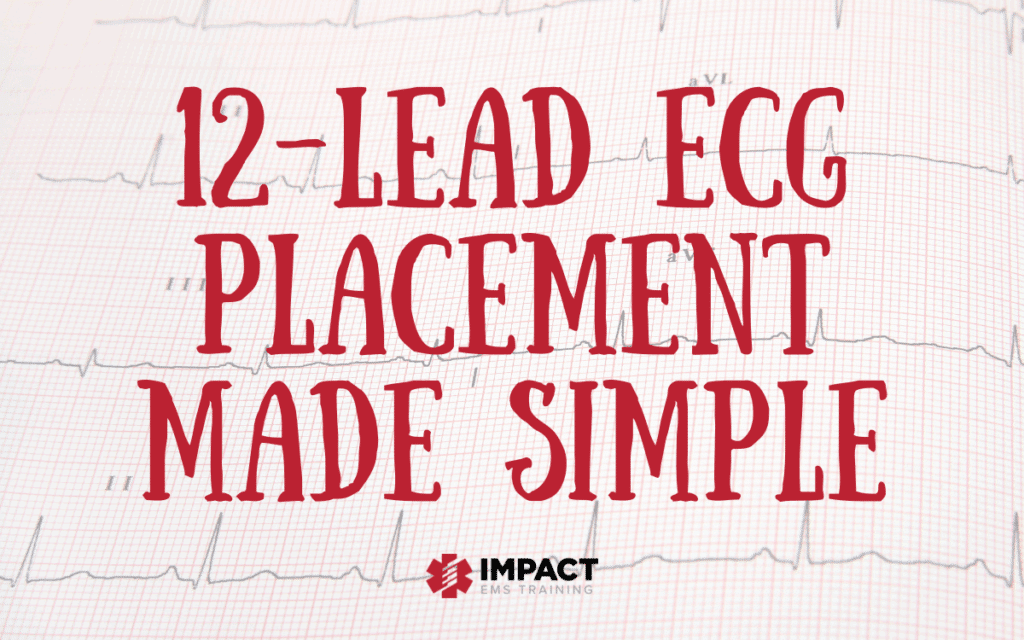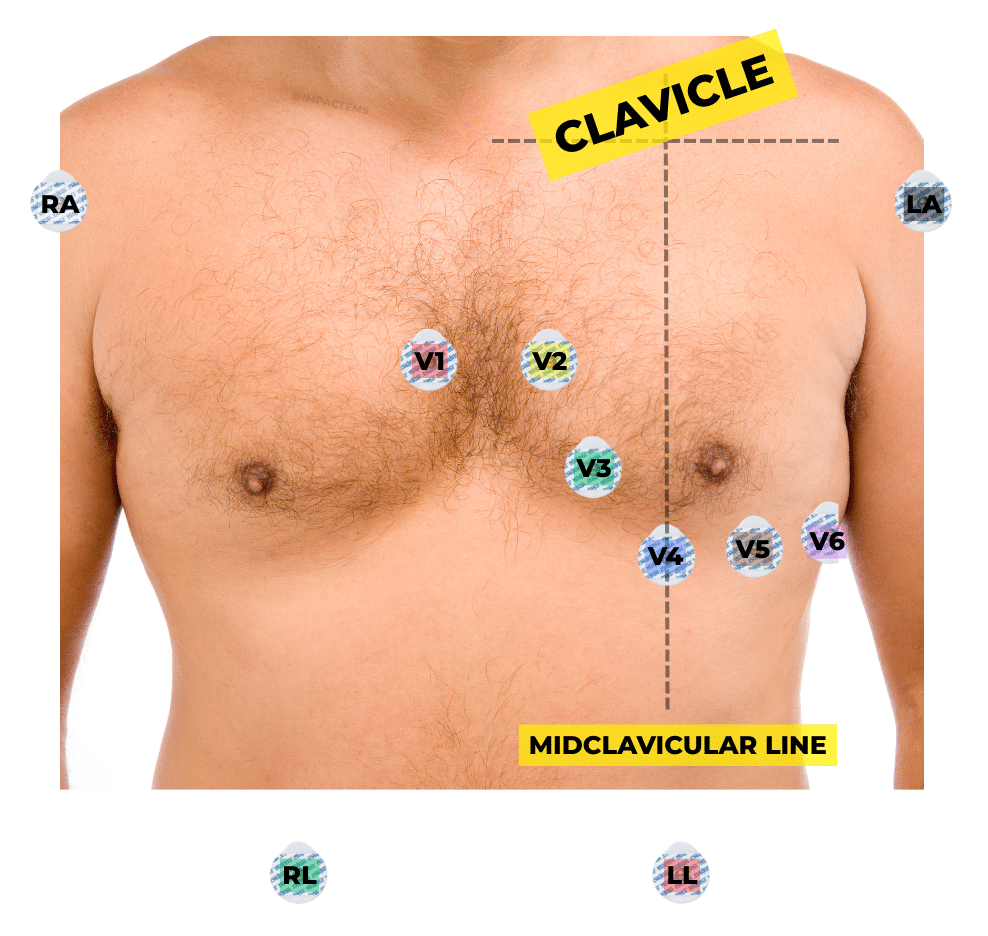Whether you’re working toward your EMS certification or just trying not to embarrass yourself with wires and stickers mid-call, nowadays knowing how to place a 12-lead ECG correctly is a foundational EMS skill.
And let’s be real, it is only 10 stickers. Let’s break down how it works, why it matters, and how to get it right every time!

Why Accurate Lead Placement Matters
12 Leads: What You’re Measuring
“Why is it called a 12-lead when I only have 10 stickers?”
Here’s the breakdown:
- 4 limb electrodes = 6 leads (I, II, III, aVR, aVL, aVF)
- 6 chest electrodes (V1-V6) = 6 direct precordial leads
- Total: 12 views of the heart generated from 10 physical electrodes
The “augmented leads” (aVR, aVL, aVF) are calculated by the machine using limb lead data.
Step-by-Step Guide to 12-Lead Placement
Limb Leads (RA, LA, RL, LL)
- Use symmetrical placement: shoulders or wrists, thighs or ankles
- Avoid bony areas or heavy muscle
Chest Leads (V1-V6)
- V1: 4th intercostal space, right of sternum
- V2: 4th intercostal space, left of sternum
- V4: 5th intercostal space, midclavicular (nipple line reference)
- V3: Midway between V2 and V4
- V6: 5th intercostal space, midaxillary
- V5: Between V4 and V6
Pro tip: Place V1 and V2 first, then skip to V4 and V6. Fill in the rest after for better accuracy.

Common Placement Mistakes and How to Avoid Them
- Switching V1 and V2: Easy to do; verify your intercostal space each time
- Forgetting anatomical differences: Breast tissue, obesity, and muscular builds may shift landmarks
- Lopsided limb leads: Always match sides for accurate limb data
“Wherever you place the sticker on the left, match it on the right. Symmetry helps everything.”
Tips for Better 12-Lead Success in the Field
- Have the patient lie flat (or as close to flat as tolerated)
- Avoid talking or movement during the read. Artifact will ruin your strip
- Run the 12-lead early and repeat often. Remember, it’s a snapshot in time, not a diagnosis
- V1 and V2 are your anchors. Misplacing these distorts the rest of the 12-lead.
- Clean the skin if needed. Sweat, oils, or body hair can cause poor contact
⚠️ Remember: You’re not just placing stickers. You’re launching diagnostics that could activate the cath lab.




